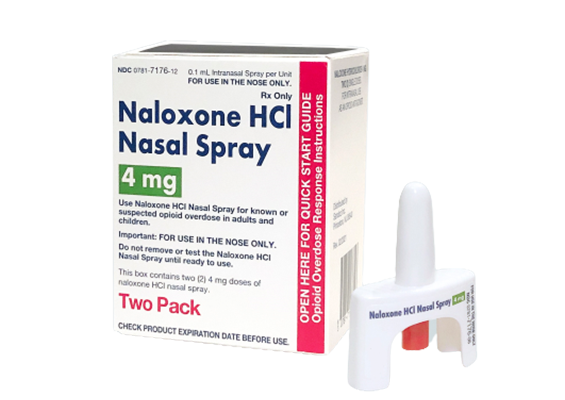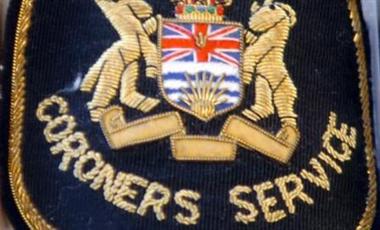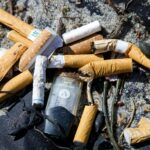Almost 200 British Columbians lost to illicit drugs in May
Preliminary reporting released by the BC Coroners Service confirms that toxic illicit drugs claimed the lives of at least 195 British Columbians in May 2022.
“After a catastrophic 2021, I am saddened to report that we are, once again, on pace to lose a record number of our community members in 2022,” said Lisa Lapointe, chief coroner, BC Coroners Service. “The illicit drug supply in this province continues to be volatile and inconsistent, and presents a significant risk to anyone who uses drugs. I strongly urge those purchasing illicit substances to take every available precaution to protect yourself. Please start with a small amount of the drug, and make sure someone is present who can provide naloxone and call for emergency assistance if you experience a negative effect. Your life is at risk.”
At least 940 lives were lost to toxic drugs in B.C. between January and May, a record number for the first five months of a calendar year. Following two months of a small decline, the 195 recorded deaths in May is the largest number ever recorded in that calendar month and is a 20% increase over the number of deaths reported in April 2022 (162). The total number of deaths in the month equates to an average of about 6.3 deaths per day.
Expedited toxicological testing further underscores the volatility of the toxic drug supply. Since it was first implemented in July 2020, results from the new expedited testing protocol have found that about 91% of submitted samples have detected fentanyl and/or its analogues, 73% have detected at least one stimulant, 19% have detected at least one other opioid and 44% have detected at least one benzodiazepine. Additionally, between July 2020 and May 2022, etizolam was found in 40% of suspected illicit drug toxicity deaths that have undergone expedited testing. Etizolam is a benzodiazepine analogue and non-opioid sedative that does not respond to naloxone and creates life-saving challenges for first responders.
Illicit drug toxicity is the leading cause of unnatural death in British Columbia.
“Every life lost to illicit drugs in our province is a preventable tragedy,” Lapointe said. “Panel members from the Coroners Service Death Review Panel into Illicit Drug Toxicity deaths recommended urgent action to address the terrible loss of life our province continues to experience. Recommended actions in their March 2022 report include a provincial framework for the distribution of safer drug supply, the development of a 30/60/90-day action plan with clear goals, targets and deliverable timeframes for reducing the number of drug toxicity deaths, and completing a framework for establishing a substance-use system of care. Responses to these recommendations have not yet been received.”
Additional key preliminary findings are below. Data is subject to change as additional toxicology results are received:
- By health authority in 2022, the highest number of illicit drug toxicity deaths have been in Fraser and Vancouver Coastal Health Authorities (302 and 263 deaths, respectively), making up 60% of all such deaths during this period.
- By health authority in 2022, the highest rates of death have been reported in Northern Health (53 deaths per 100,000 individuals) and Vancouver Coastal Health (50 per 100,000). Overall, the rate in B.C. is 43 deaths per 100,000 individuals in 2022.
- By health service delivery area in 2022, the highest rates of death have been reported in Vancouver, Thompson Cariboo, Northwest, Fraser East and Northern Interior.
- By local health area in 2022, the highest rates of death have been reported in Lillooet, Mission, Cariboo/Chilcotin, Powell River and Merritt.
- Analysis of post-mortem toxicology results shows no indication that prescribed safe supply is contributing to illicit drug deaths regionally or provincially.
Learn More:
Illicit drug overdose death report (data to May 31, 2022):
https://www2.gov.bc.ca/assets/gov/birth-adoption-death-marriage-and-divorce/deaths/coroners-service/statistical/illicit-drug.pdf
Illicit drug toxicity: Type of drug data report (data to May 31, 2022):
https://www2.gov.bc.ca/assets/gov/birth-adoption-death-marriage-and-divorce/deaths/coroners-service/statistical/illicit-drug-type.pdf
BC Coroners Service Death Review Panel: A Review of Illicit Drug Toxicity Deaths: https://www2.gov.bc.ca/assets/gov/birth-adoption-death-marriage-and-divorce/deaths/coroners-service/death-review-panel/review_of_illicit_drug_toxicity_deaths_2022.pdf
Mode of Consumption Data – Knowledge Update:
https://www2.gov.bc.ca/assets/gov/birth-adoption-death-marriage-and-divorce/deaths/coroners-service/statistical/mode-of-consumption.pdf
BCCDC Knowledge update on hydromorphone and illicit drug toxicity deaths:
http://www.bccdc.ca/resource-gallery/Documents/Statistics%20and%20Research/Statistics%20and%20Reports/Overdose/2021.09.15_Knowledge%20Update_Hydromorphone%20and%20drug%20toxicity%20deaths.pdf
Toward the Heart: http://www.towardtheheart.com
Stop Overdose BC: https://www.stopoverdose.gov.bc.ca
BC Centre on Substance Use: http://www.bccsu.ca
Risk mitigation prescribing guidelines in the context of dual public-health emergencies:
https://www.bccsu.ca/wp-content/uploads/2020/04/Risk-Mitigation-in-the-Context-of-Dual-Public-Health-Emergencies-v1.5.pdf
Lifeguard app:
http://www.phsa.ca/about/news-stories/news-releases/2020-news/new-lifeguard-app-launched-to-help-prevent-overdoses
BC Centre for Disease Control overdose response indicators:
http://www.bccdc.ca/health-professionals/data-reports/overdose-response-indicators
BC Centre for Disease Control factsheet on etizolam:
https://towardtheheart.com/assets/uploads/1609802595WXFJCmRP6tu1qI























